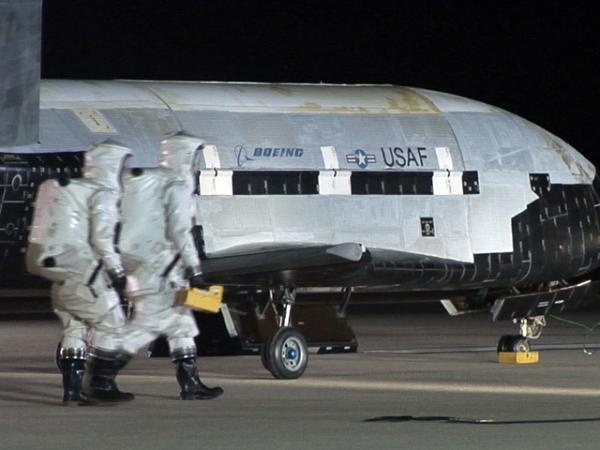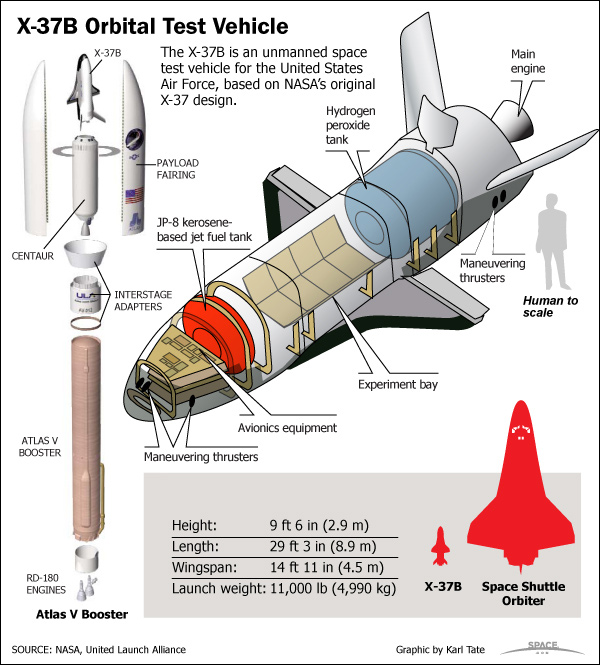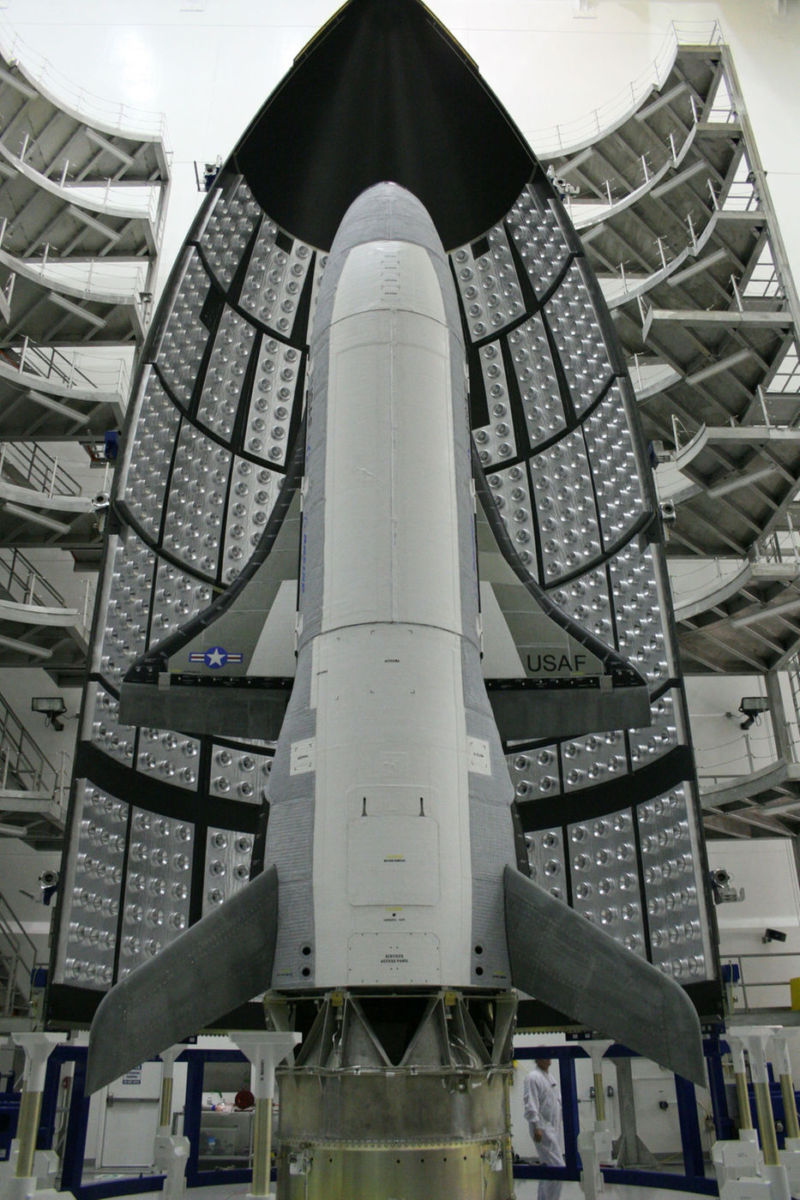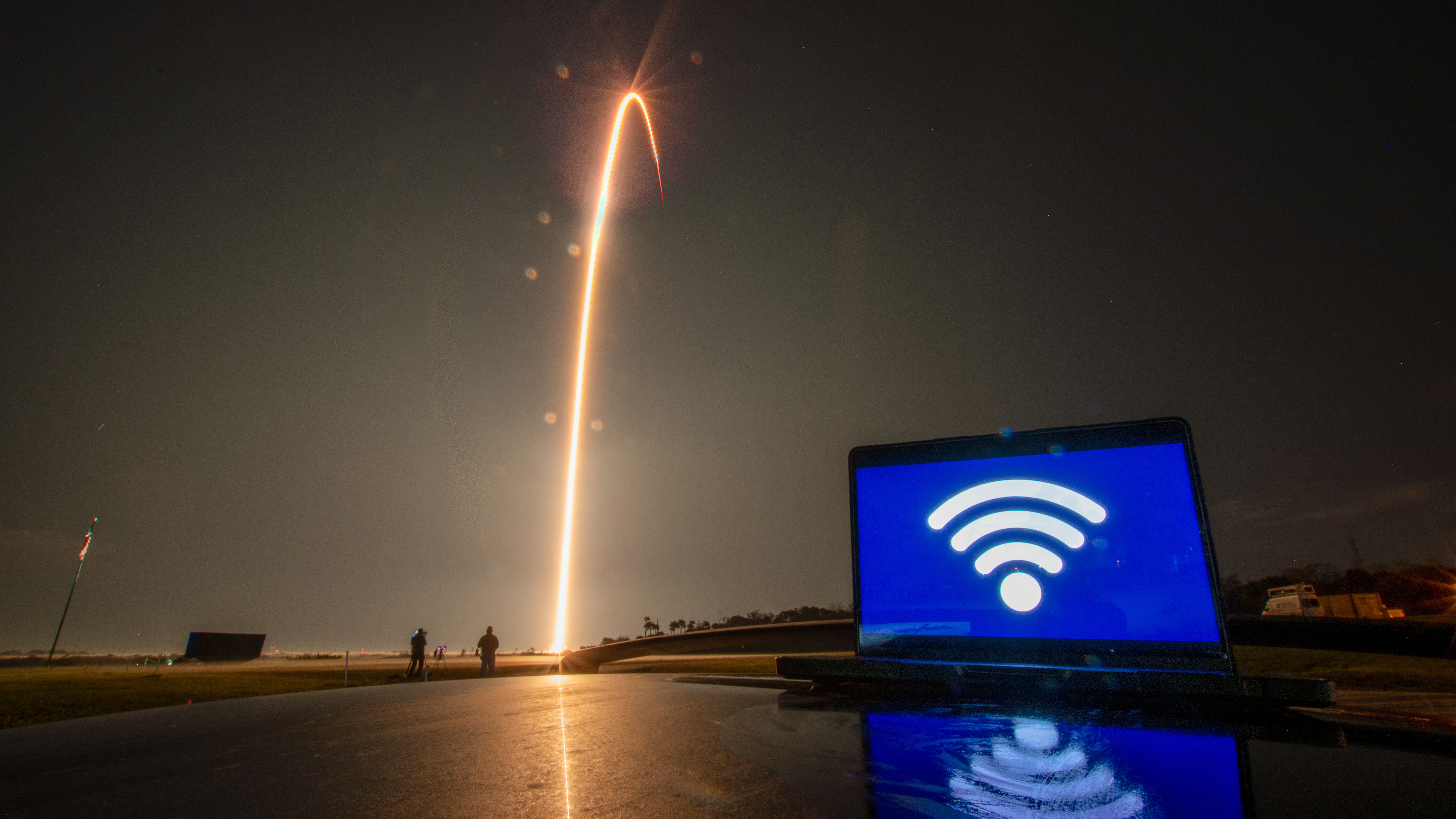
Air Force's Mysterious X-37B Space Plane Wings by 600 Days in Orbit

The U.S. Air Force's mysterious X-37B space plane has now spent 600 days in Earth orbit on the vessel's latest mission, and is nearing a program record for longest time spent in space.
The robotic X-37B lifted off atop a United Launch Alliance Atlas V rocket from Florida's Cape Canaveral Air Force Station on May 20, 2015, kicking off the program's fourth space mission (which is known as Orbital Test Vehicle-4, or OTV-4).
If the uncrewed spacecraft spends 74 more days aloft, it will break the duration record set during OTV-3, which touched down in October 2014. [The X-37B's Fourth Mystery Mission in Photos]
But it's unclear how long OTV-4 will last, or just what the X-37B is doing as it circles Earth; most details about the space plane's missions and payloads are classified.

Milestone record keeping
The first OTV mission began on April 22, 2010, and concluded on Dec. 3 of that year, following 224 days of orbit. OTV-2 lifted off on March 5, 2011, and landed on June 16, 2012, after 468 days in orbit.
The record-setting OTV-3 mission chalked up nearly 675 days in orbit, circling Earth from Dec. 11, 2012, until Oct. 17, 2014.
Get the Space.com Newsletter
Breaking space news, the latest updates on rocket launches, skywatching events and more!
All three previous OTV missions have come down to Earth at Vandenberg Air Force Base in California, but that may change for OTV-4's landing, whenever it occurs.
Heading for Florida?
Progress has been made on consolidating X-37B space plane operations, including the use of NASA's Kennedy Space Center (KSC) in Florida as a landing site for the robotic space plane.
A former KSC space-shuttle facility known as Orbiter Processing Facility-1 (OPF-1) was converted into a structure that will enable the Air Force "to efficiently land, recover, refurbish and relaunch the X-37B Orbital Test Vehicle (OTV)," according to representatives of the aerospace giant Boeing.
X-37B vehicle development falls under the control of Boeing Space and Intelligence Systems in El Segundo, California, which is Boeing's center for all space and experimental systems and government and commercial satellites.
The Air Force Rapid Capabilities Office is leading the Department of Defense's OTV initiative, by direction of the under secretary of defense for acquisition, technology and logistics and the secretary of the Air Force.
Fleet size
To date, only two reusable X-37B vehicles have been confirmed as constituting the space plane fleet. The current OTV-4 mission is the second flight of the second X-37B vehicle built for the Air Force by Boeing.

The military space plane looks like a miniature version of NASA's retired space shuttle orbiter. The X-37B is just 29 feet (8.8 meters) long and 9.6 feet (2.9 m) tall, and has a wingspan of nearly 15 feet (4.6 m). For comparison, the space shuttles were each 122 feet (37 m) long, with wingspans of 78 feet (24 m).
The X-37B has a payload bay about the size of a pickup truck bed that can be outfitted with a robotic arm. It has a launch weight of 11,000 lbs. (4,990 kilograms) and is powered in orbit by gallium arsenide solar cells with lithium-ion batteries.
Payloads aboard
Some payloads aboard the OTV-4 craft have been previously identified.
For example, Aerojet Rocketdyne has said that its XR-5A Hall Thruster had completed initial in-orbit validation testing aboard the X-37B space plane. Also on board is a NASA advanced-materials investigation.
Such test-bedding of equipment is one of the main purposes of OTV missions, along with the development of reusable-spacecraft technologies, Air Force officials have said.
"It remains a very useful way to test out things," Winston Beauchamp, deputy undersecretary of the Air Force for space, told Space.com last September during an American Institute of Aeronautics and Astronautics (AIAA) meeting in Long Beach, California.
When asked about adding more X-37Bs to the nation's fleet, Beauchamp said that the current number of vehicles meets the Air Force's needs.
Leonard David is author of "Mars: Our Future on the Red Planet," published by National Geographic. The book is a companion to the National Geographic Channel six-part series, "Mars." A longtime writer for Space.com, David has been reporting on the space industry for more than five decades. Follow us @Spacedotcom, Facebook or Google+. Published on Space.com.
Join our Space Forums to keep talking space on the latest missions, night sky and more! And if you have a news tip, correction or comment, let us know at: community@space.com.

Leonard David is an award-winning space journalist who has been reporting on space activities for more than 50 years. Currently writing as Space.com's Space Insider Columnist among his other projects, Leonard has authored numerous books on space exploration, Mars missions and more, with his latest being "Moon Rush: The New Space Race" published in 2019 by National Geographic. He also wrote "Mars: Our Future on the Red Planet" released in 2016 by National Geographic. Leonard has served as a correspondent for SpaceNews, Scientific American and Aerospace America for the AIAA. He has received many awards, including the first Ordway Award for Sustained Excellence in Spaceflight History in 2015 at the AAS Wernher von Braun Memorial Symposium. You can find out Leonard's latest project at his website and on Twitter.









